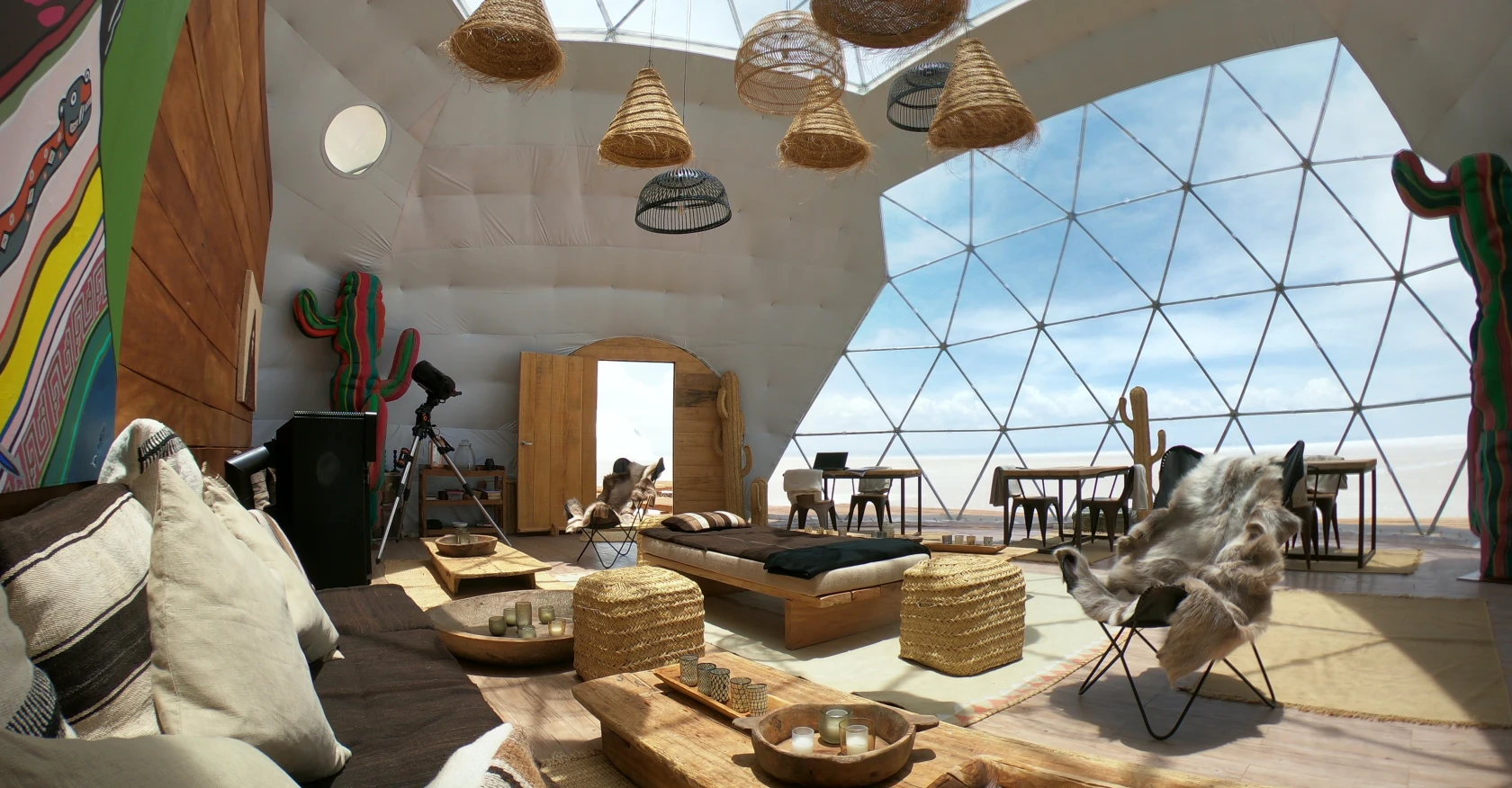 If you’re finally, cautiously starting to make trip plans again, you may well find yourself thinking about how to travel differently in a postpandemic world. Maybe you want to go big—take that once-in-a-lifetime trip you’ve long dreamed of. Or maybe you’re conscious of traveling lightly and want to leave a smaller footprint when you roam.
If you’re finally, cautiously starting to make trip plans again, you may well find yourself thinking about how to travel differently in a postpandemic world. Maybe you want to go big—take that once-in-a-lifetime trip you’ve long dreamed of. Or maybe you’re conscious of traveling lightly and want to leave a smaller footprint when you roam.
Several new resorts will help you accomplish both goals. Destinations unto themselves, they offer the luxury you may crave—lavishly appointed rooms, indulgent spa treatments—but also embody truly sustainable practices, including those that are unsexy (like wastewater management) and labor intensive (like land stewardship). As such, they offer a way to re-enter the travel universe and also feel good about it.
Kachi Lodge, Bolivia
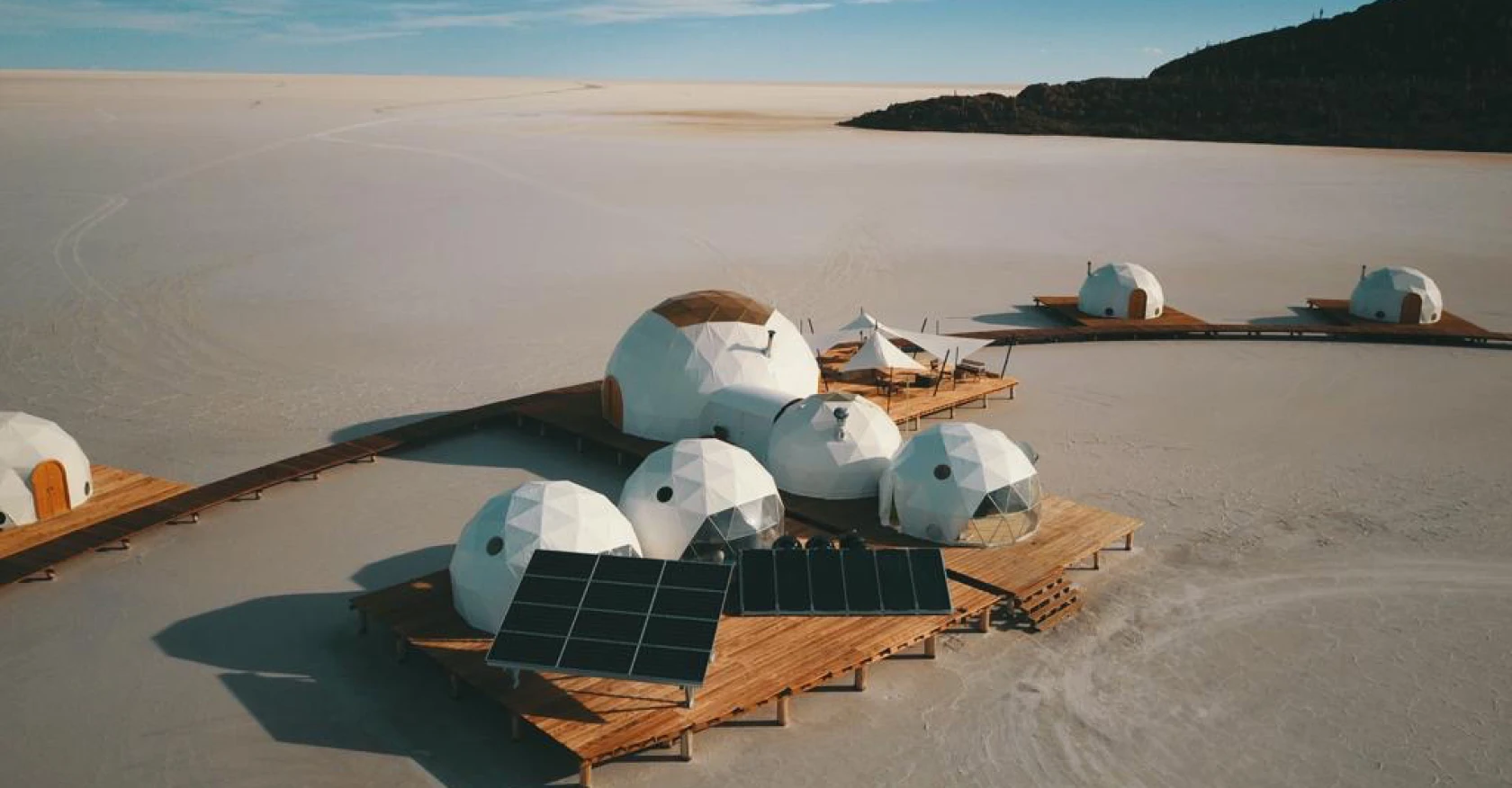
Set against Salar de Uyuni—the world’s largest salt flats—Kachi Lodge, which opened in 2019, comprises a cluster of geodesic domes built on platforms that leave the delicate salt-pan surface undisturbed. Surrounding the property is a near-moonscape of beautiful empty plains crusted with glittering white salt—except during the November–April wet season, when they can flood to become a vast, shallow, mirror-clear lake.
Earth-friendly accommodation
Each of the six individual, 300-square-foot domes, plus a larger one for communal gathering, are powered by solar- and turbine-generated electricity and heated by pellet stoves. All are also stylishly outfitted with furniture made from local cactus wood, plus alpaca-wool textiles woven by regional artisans. Property-wide reverse-osmosis water management and incinerator toilets minimize precious water consumption and protect the integrity of the surrounding environment.
Beyond-property initiatives
The lodge works in close partnership with the nearby village of Jirira, running training and educational programs and hiring villagers to guide guest excursions on the salar. Locals may take you hiking, stargazing, wildlife-spotting, and on tours of outdoor art installations created by Native artist Gaston Ugalde. (From $2,280 per person for a two-night stay.)
Islas Secas, Panama
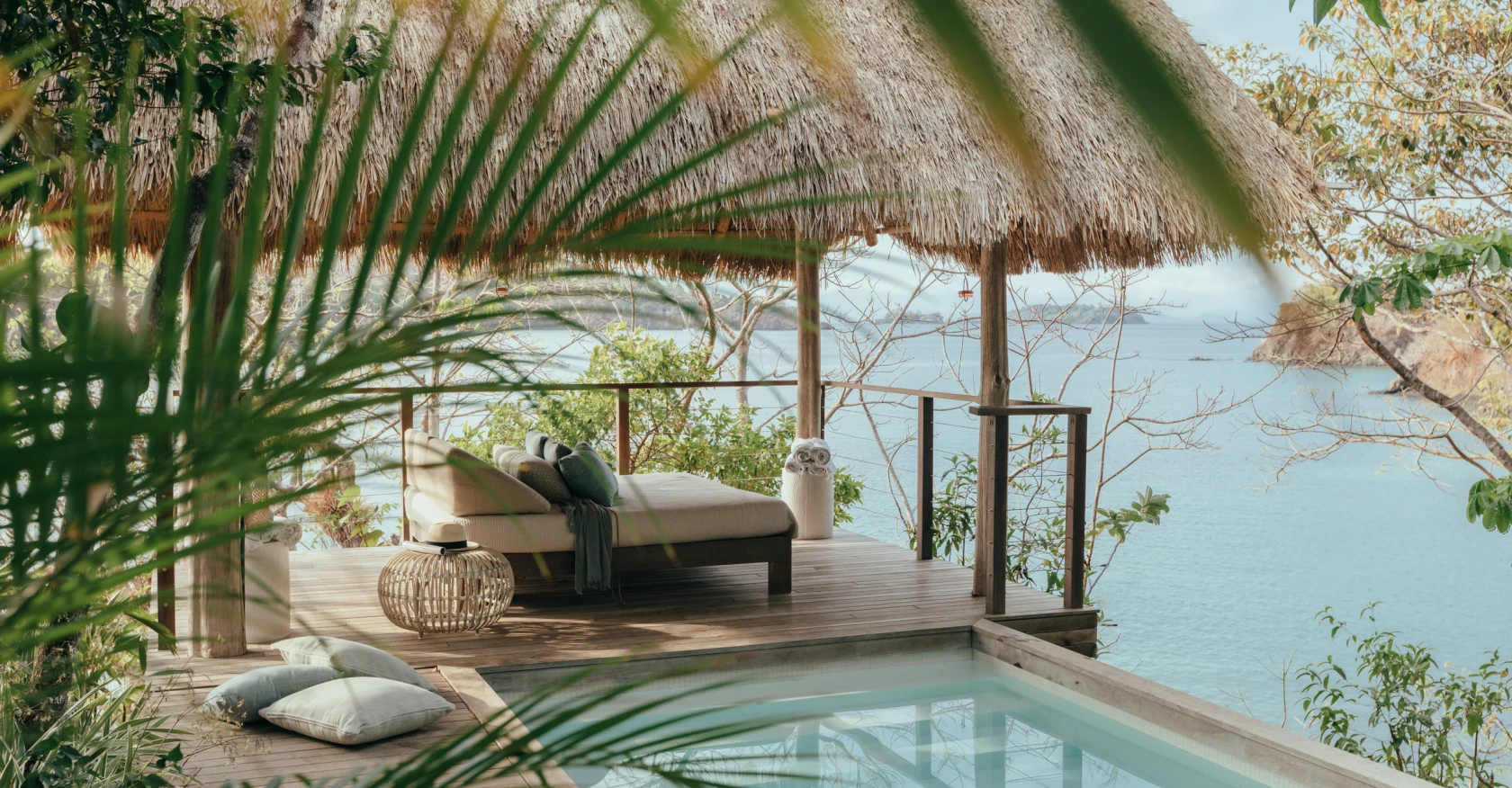
On a private, 14-island archipelago in the Gulf of Chiriqui, this 2019 resort accommodates just 24 guests at a time in its breeze-cooled casitas. A cathedral-like open-air dining pavilion allows for socially distanced meals, and a dedicated dive center is the jumping-off point for exploring the country’s most vibrant marine ecosystem. The gulf itself teems with migrating humpback whales, dolphins, sea turtles, giant manta rays, and more than 700 species of fish; a short boat ride away is Coiba National Marine Park, a UNESCO-designated preserve encompassing more than 800 square miles.
Earth-friendly accommodation
Seven cliffside and jungle casitas (most with multiple bedrooms and private pools), as well as all the resort’s common spaces, are built and furnished with certified-sustainable materials (think Brazilian ipé for the hardwood floors). The property is 100 percent solar powered through a nearly 1,000-foot photovoltaic array, and all wastewater is captured for irrigating the resort’s thousands of native trees.
Beyond-property initiatives
Through its ancillary Islas Secas Foundation, the resort donates to several local conservation organizations, including Panacetacea (which studies and protects Panamanian marine species), and the Panama chapters of the Audubon Society and Panthera. The resort has also cultivated job-training and trash-recycling programs and mobile medical services in nearby villages. (From $1,500 per night, which includes meals, activities, and transfers to and from the local airport.)
Cheetah Plains, South Africa
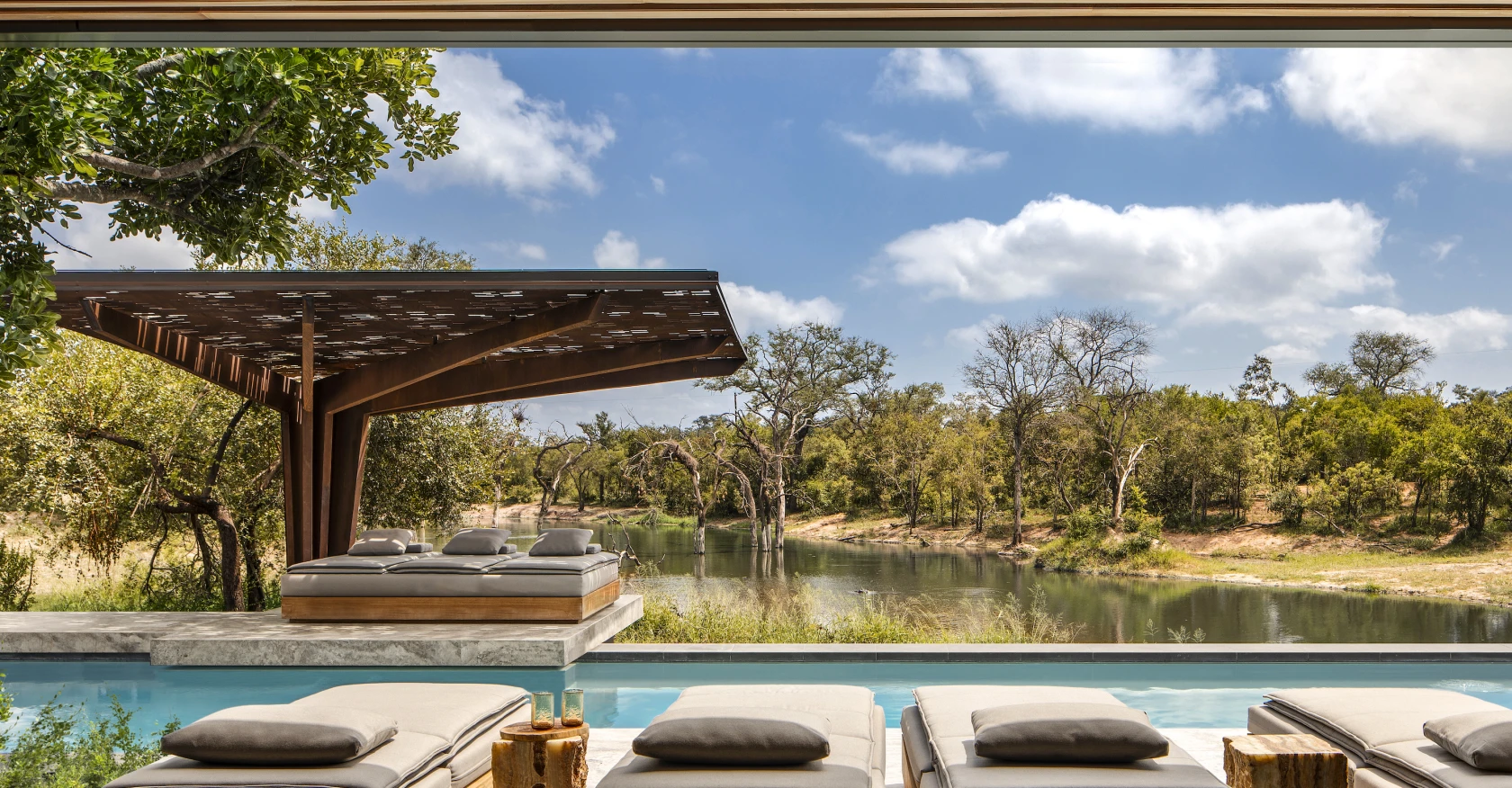
This opulent safari lodge sits within the Sabi Sands Game Preserve, a 250-square-mile stretch of grasslands, rivers, and mopane forests where a dizzying profusion of wildlife resides. The property’s compound—all slick, modern private villas—abuts a shaded watering hole where elephants, zebras, hippos, buffalo, antelopes, and even leopards congregate daily.
Earth-friendly accommodation
Each of the resort’s palatial, individually booked “Plains Houses” has four bedrooms, a private pool, and a dedicated chef. All incorporate an “Afro-minimalist” design aesthetic, with floors and walls of raw stone and sustainably sourced wood; all are entirely solar powered and employ a filtration system that recycles wastewater for irrigation. The resort is the first in the country to have a fleet of electric safari vehicles—four custom Land Cruisers fitted with Tesla batteries—that allow guests on game drives to approach animals more closely and unobtrusively.
Beyond-property initiatives
As well as contributing to the conservation and antipoaching efforts at Sabi Sands, the resort has undertaken numerous initiatives to support the local Utah community (where many of its staffers live). Projects include drilling of a community water borehole, and the construction of a nursery school providing early education and meals to village children. (From $9,000 per four-bedroom Plains House, including all meals, drinks, game drives, and spa treatments.)
Arctic Bath, Sweden
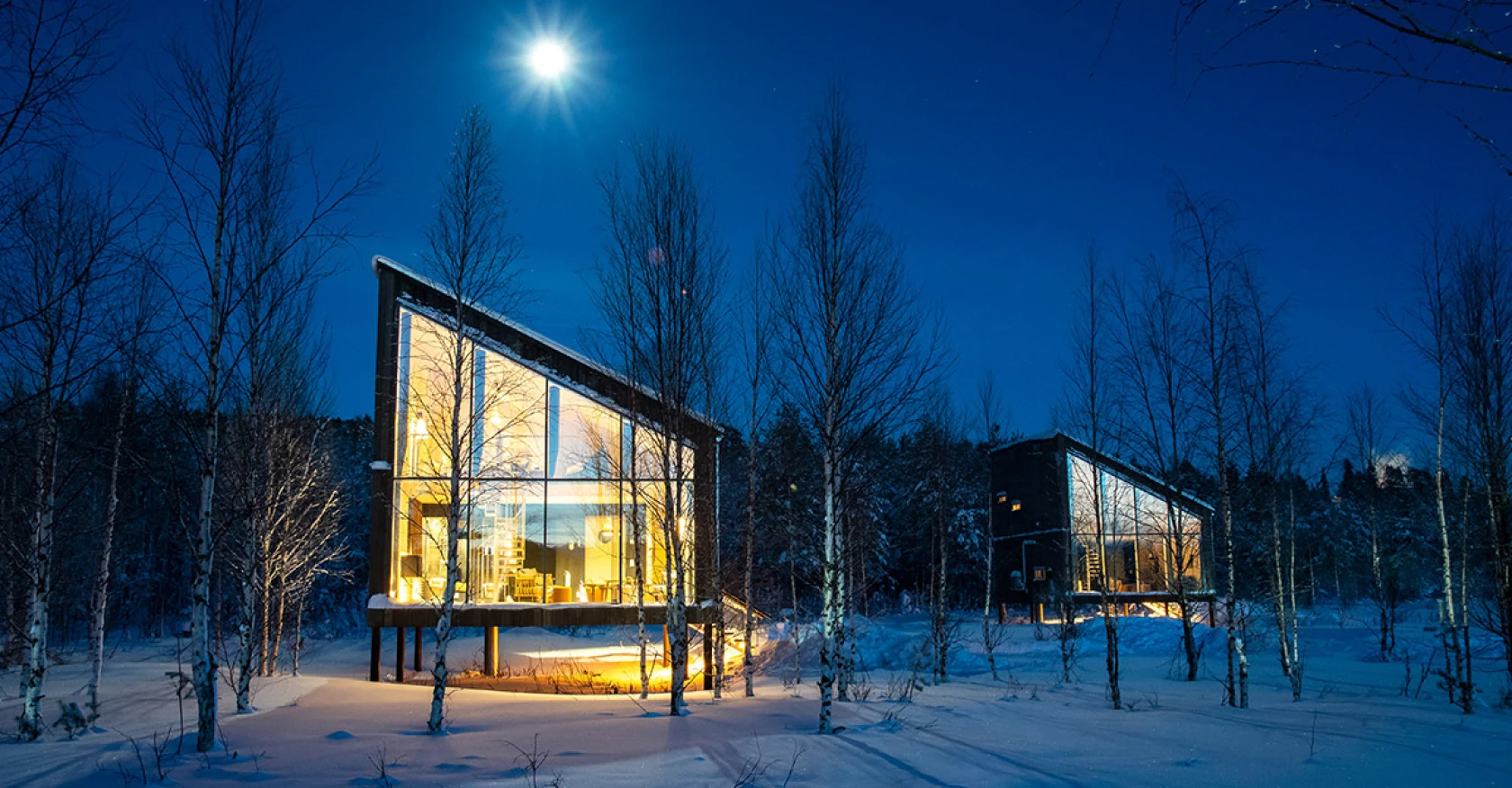
Suspended in and above the frigid Lule River in remote Swedish Lapland, Arctic Bath excited both conservationists and design buffs when it opened in 2020. Half of the resort’s futuristic-looking cabins, as well as its showpiece—a circular, timber-lined communal spa building surrounding an open-air cold plunge pool—float on the surface of the forest-fringed river during warm-weather months beneath the midnight sun. In winter, they are frozen in ice, while the Northern Lights dance overhead.
Earth-friendly accommodation
The resort’s dozen spare-but-comfy lodgings include six land cabins (built on stilts to allow riverbank flora and fauna to remain undisturbed) and six that float, with buoyant walkways connecting to shore. All feature interior paneling of raw Swedish pine, pellet stoves for ecofriendly heat, and glass panes that look out over the Arctic riverscape. All electricity in the cabins and common areas is powered by river-water turbines, all organic waste from the property kitchens is composted, and all on-land buildings are topped by living green sedum roofs, which provide flowering plants for pollinators.
Beyond-property initiatives
Many of the nature outings the resort offers its guests—such as hiking, wild herb gathering, and snowshoeing amid the surrounding birch and pine forests and river valleys (carpeted by wildflowers in summer, trod by reindeer in winter)—are guided by local Sámi, whose semi-nomadic indigenous culture has thrived across northern Scandinavia for centuries. (From about $595 per night.)

